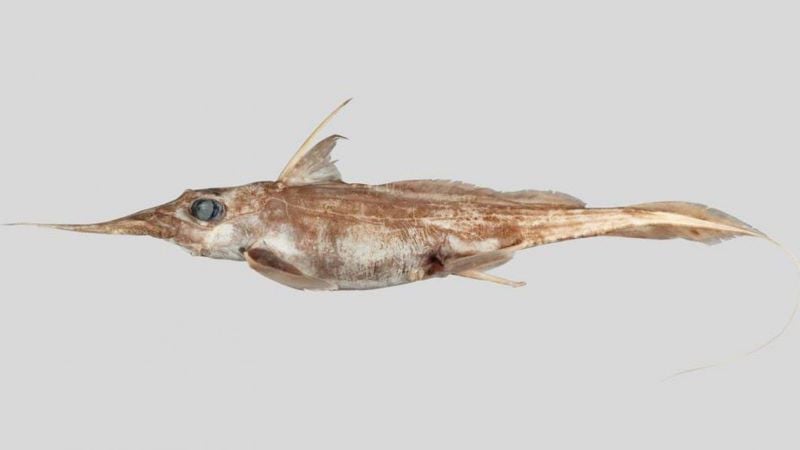
A new species of ghost shark, characterised by its unusually long nose and whip-like tail, has been discovered in the deep waters off New Zealand. Initially, scientists from New Zealand's National Institute for Water and Atmospheric Research (Niwa) believed the creature to be part of an existing global species. However, further analysis revealed it to be a genetically distinct species.
The newly identified Australasian narrow-nosed spookfish is unique to the waters of New Zealand and Australia. Ghost sharks, also known as chimaeras or spookfish, are a rare group of cartilaginous fish related to sharks and rays. Distinguished by their smooth skin, beak-like teeth, and large pectoral fins, they are sometimes called the ocean's butterflies due to the way they glide gracefully through the water. Feeding primarily on crustaceans like shrimp and molluscs, these mysterious creatures are usually found at depths of up to 2,600 metres, with very little known about their biology or potential threats.
"Ghost sharks are incredibly under-studied, there is a lot we don’t know about them," said Dr Brit Finucci, a fisheries scientist at Niwa, who played a key role in the discovery. "Chimaeras are quite cryptic in nature – they can be hard to find in the deep ocean … and they generally don’t get the same attention sharks do, when it comes to research."
The new species was discovered in the Chatham Rise, about 750km east of New Zealand’s coast. Its most distinctive feature is its elongated snout, which makes up half of its body length and is thought to help it hunt for prey. The species, which can grow up to a metre long, has chocolate-brown skin, large milky eyes, and a serrated dorsal fin likely used to fend off predators.
Globally, around 55 species of ghost sharks have been identified, with roughly 12 of those found in New Zealand and the South Pacific. While the team initially suspected they had uncovered a new species based on its morphology, genetic testing was required to confirm the distinction. The moment of confirmation was thrilling for Finucci.
“It’s really neat to be able to contribute to science,” she said. “Understanding the animal itself can feed into further research and whether they need conservation management.”
In a personal tribute to her grandmother, Finucci named the species Harriotta avia: Harriotta after her grandmother’s name, and avia, meaning grandmother in Latin. “I also liked the idea that … sharks and ghost sharks are the old, ancient relatives of fish, and I was naming the animal after an ancient relative of mine,” she added.













1723284052-0/BeFunky-collage-(6)1723284052-0-270x192.webp)











COMMENTS
Comments are moderated and generally will be posted if they are on-topic and not abusive.
For more information, please see our Comments FAQ